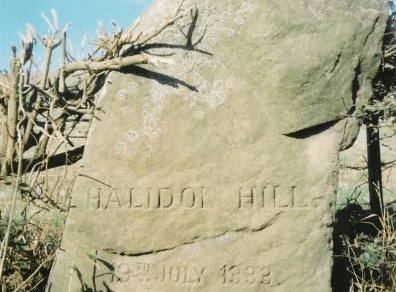
The post-war period was also a time when urban Scotland was given a major facelift and there was a mass movement of people out of the city centres. Again, this was perhaps most noticeable around Glasgow were over-crowding and slum housing had been a major problem for many generations. This was one of the biggest challenges for state intervention policies to face, but the challenge was met swiftly, with a staggering 86% of all houses built after the war coming from the public sector. The Clyde Valley Plan was put together by Sir Patrick Abercrombie and his team of planners, who proposed to move people out of dilapidated housing in the city centre into New Towns and peripheral housing schemes, like Pollok, Castlemilk, Drumchapel and Easterhouse on the outskirts of Glasgow. As land became scarce to build on, the architectural fashion shifted to the construction of tower blocks, and whole communities were split up and re-housed in accommodation which was quite often completely unsuitable for families or pensioners.
Many of these housing projects were built in a hurry, they degraded at an alarming rate, and had often no shops, amenities or adequate transport facilities. Yet at the time they were viewed as the saviour of slum Britain and were welcomed by many in the community simply because they had basic facilities like private toilets. The council’s role as a major landlord also protected people from the unscrupulous activities of private landlords, who had caused such grief both during and after the First World War. In the 50s, council rent was a third of that in the private sector. Again, all these developments made Scotland a country dependent on state intervention for its survival and a stronghold for labour at every election – a loyalty which labour have carried with them into the 21st century.
Devolution and Regeneration
Scotland entered the 1970s facing rising unemployment, decline in the industrial sector yet again, and a Conservative government under Ted Heath which wanted to reverse the trend of interventionist policy. It was at this time that the issue of Home Rule again came to the forefront of Scottish political life, with the Scottish National Party proclaiming it a travesty that Scotland could suffer such hardship when the country had the newly found riches of North Sea Oil just off its coastline. The SNP had relative success at the 1974 General Election, taking mainly Tory seats, but the Labour Party were quick to perceive the threat to their Scottish stronghold and openly flirted with the idea of Home Rule. After a disastrous decade for Labour and the Trade Unions, the party gave way to a referendum on the question of Home Rule on 1st May 1979. The result was 51.6% in favour, with 48.4% against the motion, however, this wasn’t deemed enough for Scotland govern its own affairs. The turn-out for the referendum had been poor, with the ‘yes’ vote gaining less than a third of the whole electorate. A late amendment to the Scotland Act had stipulated that a victory would require at least 40% of the entire electorate, which was not the case, and the bill was quashed. The SNP reacted with a ‘Scotland Said Yes’ campaign and tabled a motion of no confidence in parliament which was upheld by a one-vote margin – the result was a new Conservative Government under Margaret Thatcher. The SNP itself lost nine of its 11 seats in the election and Home Rule was off the agenda for many years.
In the first two years of the Thatcher administration Scotland lost a fifth of its workforce. Lowering inflation was the priority, and this would be done through cuts in public expenditure, privatisation and the powering down of the Trade Unions. These changes in direction hit the industrial north of Britain very sorely. The traditional industries on which Scotland had been so long over-dependent would no longer be propped up through government funding and allowed to make losses. Coal miners were hit very badly – 15 pits falling to two pits throughout the 80s – the textile industry was also put to rest, including the famous jute trade in Dundee, and steel production plummeted, with Ravenscraig finally shutting in June 1993. The last 50 years of Scottish society had been turned upside down, yet many deemed this to be an inevitable downfall – throughout the whole century Scotland had been dependent on one ever-narrowing sector of the economy and finally laying this unhealthy tradition to rest was never going to be easy. As Scotland entered the 21st century, the diversification which was lacking for so long was starting to penetrate the economy, with the electronics industry, the service sector and financial institutions all excelling.
At the same time Glasgow tried to shake off the stereotypes which had portrayed it as as a redundant, post-industrial city, fuelled by alcohol and violence. A huge marketing drive was mobilised to persuade people of the city’s merits. In 1987 a Garden Festival was opened on the old docklands, which was shortly followed by stints as European City of Culture and European City of Architecture in the 1990s. New building projects spread along docks and the city cleaned up much of its image, although this should be qualified by adding that many of the city’s peripheral housing projects, which visitors would never see, are still in terrible states of disrepair, with some of the worst rates of poverty in Britain.
Confidence in both the economy and Scottish society at large increased throughout the 1990s and culminated in the re-opening of the Scottish Parliament. The initiative, which owed much to the efforts of the late Labour leader, John Smith, was picked up by Tony Blair, and the referendum came just a few months after Labour’s landslide victory in 1997. This time round the results were unanimous, 74.3% supported Home Rule, with 63.5% agreeing that the parliament should have tax-varying powers. In July of 1999 a parliament met in Edinburgh for the first time since 1707. Many saw the event as the beginning of a new cycle in Scottish history.



